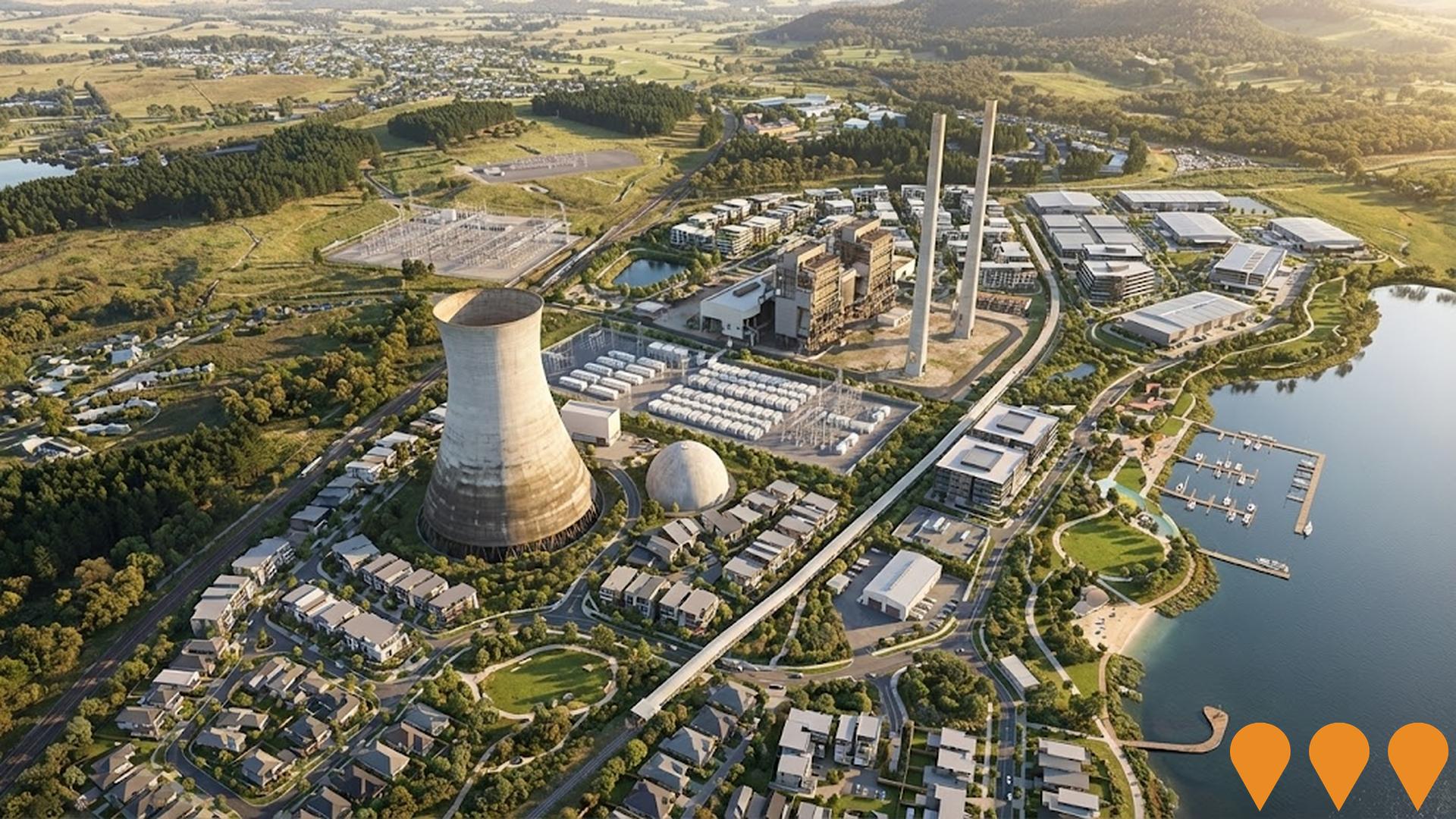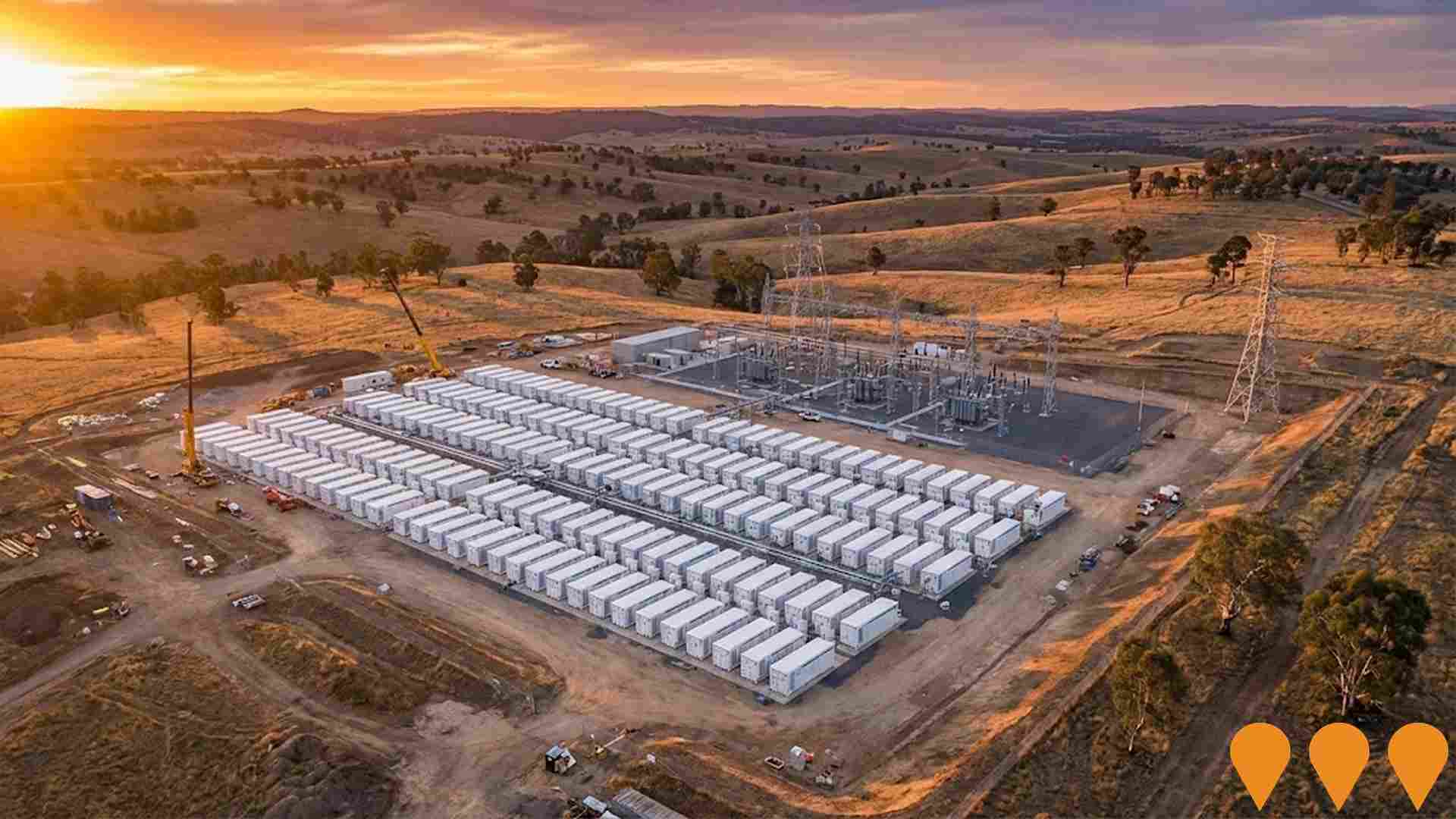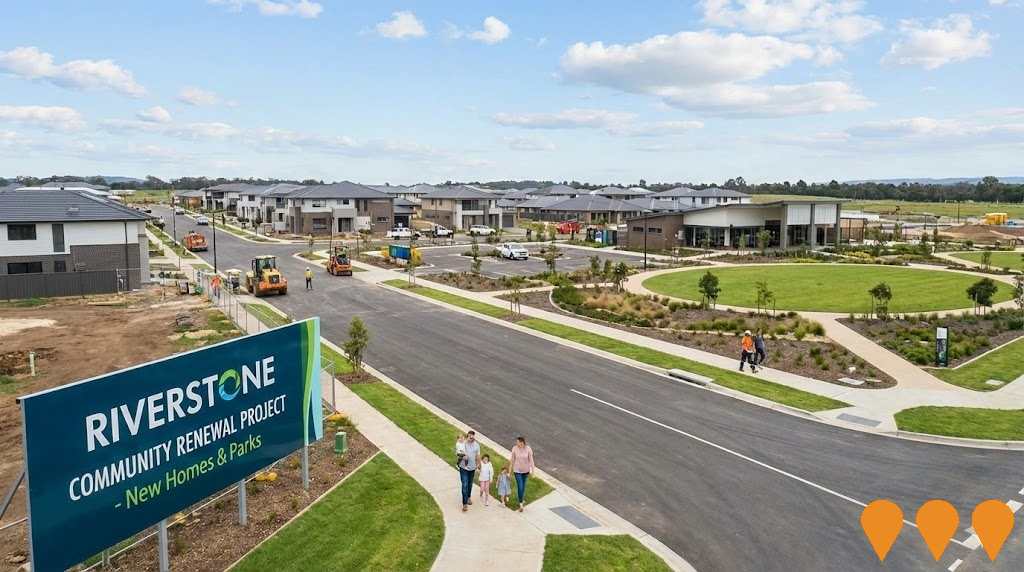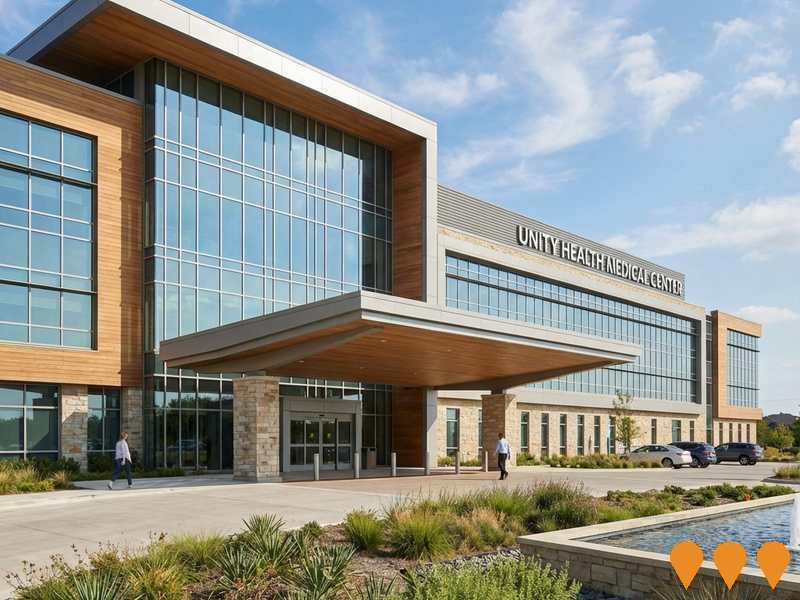Chart Color Schemes
est. as @ -- *
ABS ERP | -- people | --
2021 Census | -- people
Sales Activity
Curious about local property values? Filter the chart to assess the volume and appreciation (including resales) trends and regional comparisons, or scroll to the map below view this information at an individual property level.
Find a Recent Sale
Sales Detail
Population
Lithgow has shown very soft population growth performance across periods assessed by AreaSearch
Lithgow's population is approximately 12,386 as of August 2025. This figure represents an increase of one person (0.0%) since the 2021 Census, which recorded a population of 12,385. The change was inferred from the estimated resident population of 12,305 in June 2024 and an additional 105 validated new addresses since the Census date. This results in a population density ratio of 103 persons per square kilometer. Lithgow's growth rate since the census is within 2.7 percentage points of its SA4 region (2.7%), indicating competitive growth fundamentals. Overseas migration was the primary driver of population gains during recent periods.
AreaSearch uses ABS/Geoscience Australia projections for each SA2 area, released in 2024 with a base year of 2022. For areas not covered by this data, NSW State Government's SA2 level projections are used, released in 2022 with a base year of 2021. Growth rates by age group from these aggregations are applied to all areas for years 2032 to 2041. Projected population trends indicate a decline overall, with Lithgow's population expected to decrease by 294 persons by 2041. However, specific age cohorts are anticipated to grow, notably the 35-44 age group, projected to increase by 140 people.
Frequently Asked Questions - Population
Development
The level of residential development activity in Lithgow is very low in comparison to the average area assessed nationally by AreaSearch
Lithgow has recorded approximately 27 residential properties granted approval each year over the past five financial years, totalling 136 homes. As of FY-2025/26, six approvals have been recorded. The population decline during this period suggests that new supply has likely kept pace with demand, providing good choice for buyers. The average construction value of new properties is $431,000, consistent with regional patterns.
In the current financial year, $8.6 million in commercial approvals have been registered, indicating limited focus on commercial development. Compared to the Rest of NSW, Lithgow shows substantially reduced construction activity (53.0% below the regional average per person), which typically reinforces demand and pricing for existing properties. This is also below the national average, reflecting the area's maturity and possible planning constraints. Recent construction comprises 70.0% standalone homes and 30.0% attached dwellings, indicating an expanding range of medium-density options across various price brackets. This shows a significant shift from the current housing mix (currently 86.0% houses), reflecting reduced development site availability and addressing changing lifestyle demands and affordability requirements. The estimated population per dwelling approval is 994 people, reflecting Lithgow's quiet, low activity development environment.
With stable or declining population projections, Lithgow should see reduced housing demand pressures, benefiting potential buyers.
Frequently Asked Questions - Development
Infrastructure
Lithgow has emerging levels of nearby infrastructure activity, ranking in the 35thth percentile nationally
Changes to local infrastructure significantly impact an area's performance. AreaSearch identified 13 projects that could affect the region. Notable initiatives include Lithgow Council Subdivision 47 Allotments, Lithgow Area Resignalling (Stage 2), Great Western Highway Upgrade Program (West Section: Little Hartley to Lithgow), and Bowenfels Rail Viaducts. The following list highlights those most relevant.
Professional plan users can use the search below to filter and access additional projects.
INFRASTRUCTURE SEARCH
 Denotes AI-based impression for illustrative purposes only, not to be taken as definitive under any circumstances. Please follow links and conduct other investigations from the project's source for actual imagery. Developers and project owners wishing us to use original imagery please Contact Us and we will do so.
Denotes AI-based impression for illustrative purposes only, not to be taken as definitive under any circumstances. Please follow links and conduct other investigations from the project's source for actual imagery. Developers and project owners wishing us to use original imagery please Contact Us and we will do so.
Frequently Asked Questions - Infrastructure
Former Wallerawang Power Station Redevelopment
Comprehensive redevelopment of the 620-hectare former Wallerawang Power Station site into a multi-use precinct featuring residential, employment enterprise zones, tourism, and recreation areas. The project includes 1,260 dwellings, facilities to support 3,500 jobs, a 500MW/1,000MWh battery energy storage system (Wallerawang 9), potential gigawatt-scale data centre campus, and activation of Lake Wallace foreshore. The planning proposal was fast-tracked under the State Significant Rezoning Policy in July 2025, with rezoning anticipated for first half of 2026. Key infrastructure retained includes the Turbine Generator Hall, Dry Storage Dome, and iconic Unit 8 Cooling Tower. The precinct leverages existing high-voltage transmission infrastructure, water resources (Lake Wallace - 4,300ML capacity), rail access, and transport networks to create a catalyst for regional economic transformation. Public exhibition of the planning proposal is expected towards the end of 2025.

Wallerawang 9 Battery Energy Storage System
A 500MW/1,000MWh Battery Energy Storage System to be developed in two stages (Stage 1: 300MW/2hrs, Stage 2: 300MW/4hrs) on the site of the former Wallerawang Power Station. The BESS will connect to the adjacent 330kV TransGrid Wallerawang Substation to provide grid stability, firming capacity for renewable energy, and frequency control ancillary services. Shell Energy acquired development rights from Greenspot in January 2023 and is progressing grid connection approvals and modifications to the existing development approval. Construction is scheduled to begin from 2025 onwards, subject to Final Investment Decision. The project will create up to 100 construction jobs during peak construction period and up to 5 operational jobs.

Lake Lyell Pumped Hydro Energy Storage Project
A pumped hydro energy storage project near Lithgow, NSW, using Lake Lyell as the lower reservoir and a new upper reservoir behind the southern ridge of Mount Walker. Originally proposed at 335 MW, value engineering increased capacity to approximately 385 MW with up to 8 hours of storage (÷3,080 MWh). The underground powerhouse is located 170m below ground with two reversible pump-turbine units. The project, a joint venture between EnergyAustralia (25%) and EDF Power Solutions Australia (75%), has been declared Critical State Significant Infrastructure (CSSI) by the NSW Government. It remains in the Prepare EIS phase, with EIS submission targeted for 2025, approvals 2026, construction 2027-2031, and operations from 2031. The project supports NSW's renewable energy transition by storing excess renewable generation and dispatching during peak demand.

Mount Lambie Wind Farm
A 200 MW wind generation project with 100 MW battery energy storage system (BESS) capable of powering approximately 115,000 homes annually. The project will connect to the existing transmission network to supply clean energy to the National Electricity Market, contributing to NSW Government's target to halve emissions by 2030 and achieve net zero by 2050. Located near the retiring Mt Piper and former Wallerawang coal-fired power stations, the project features up to 20 wind turbines spread over a 12-kilometer radius and will generate significant investment and economic benefits for the Lithgow region. Expected to create up to 150 jobs during construction and operate for 25-35 years.

Great Western Battery
The Great Western Battery is a 500 MW / 1,000 MWh grid-scale battery energy storage system proposed by Neoen north of Wallerawang in the Lithgow region of NSW. It is designed to provide frequency control, load shifting and other grid services, supporting reliability and the Central-West Orana Renewable Energy Zone by leveraging the existing Wallerawang substation and transmission infrastructure.

Great Western Highway Upgrade - Katoomba to Lithgow
Targeted upgrades on the Great Western Highway between Katoomba and Lithgow to improve safety, traffic flow and resilience. Active works in 2023-2025 include the Medlow Bath Upgrade (1.2 km widening to four lanes and a new pedestrian bridge with lifts) and the Coxs River Road Upgrade at Little Hartley (2.4 km four-lane realignment and new grade-separated interchange). The Medlow Bath pedestrian bridge opened in April 2025; the road works and Coxs River Road Upgrade are expected to complete in late 2025. Broader duplication proposals, including the Blackheath to Little Hartley tunnel, remain paused pending funding.

Bowen Vista Estate
Residential subdivision in South Bowenfels. Hynash constructed Stage 3 comprising 10 lots with roads, kerb and gutter, signage, and installation of utilities. Works for Stage 3 commenced January 2016 and were completed by early December 2016.

Lithgow Council Subdivision 47 Allotments
Council-owned land subdivision into 47 residential allotments developed in 2 construction stages. The project includes new roads, supporting infrastructure, and bulk earthworks to create housing opportunities in the growing Bowenfels area. This development addresses the increasing housing demand in the Lithgow region, particularly in anticipation of population growth from the Western Sydney Airport development.

Employment
AreaSearch assessment indicates Lithgow faces employment challenges relative to the majority of Australian markets
Lithgow's workforce is balanced across white and blue-collar jobs, with prominent essential services sectors. The unemployment rate in June 2025 was 4.4%.
There were 5,384 employed residents, an increase from the previous year despite a labour force decrease of 2.4% and an employment decline of 4.1%, leading to a rise in unemployment by 1.8 percentage points. The local unemployment rate was 0.8% higher than Rest of NSW's rate of 3.7%. Workforce participation lagged behind the region at 47.8%. Key industries for Lithgow residents were health care & social assistance, public administration & safety, and retail trade.
Notably, mining had a significant presence with an employment share three and a half times higher than the regional level. Conversely, agriculture, forestry & fishing had limited presence at 0.4% compared to the regional average of 5.3%. Jobs and Skills Australia's national employment forecasts from May 2025 project overall growth of 6.6% over five years and 13.7% over ten years. Applying these projections to Lithgow's employment mix suggests local growth of approximately 5.9% over five years and 12.7% over ten years, though this is a simple extrapolation for illustrative purposes.
Frequently Asked Questions - Employment
Income
Income figures position the area below 75% of locations analysed nationally by AreaSearch
Lithgow's median income among taxpayers in financial year 2022 was $48,799. The average income stood at $61,515. These figures are below the national averages of $49,459 and $62,998 respectively for Rest of NSW. By September 2025, estimates based on a 12.61% Wage Price Index growth suggest median income will be approximately $54,953 and average income will be around $69,272. Census data indicates that incomes in Lithgow fall between the 7th and 13th percentiles nationally. The majority of residents, 28.3%, earn between $400 - 799 annually, while across the region, most residents earn between $1,500 - 2,999 annually. Housing affordability pressures are severe in Lithgow, with only 83.7% of income remaining after housing costs, ranking at the 8th percentile nationally.
Frequently Asked Questions - Income
Housing
Lithgow is characterized by a predominantly suburban housing profile, with a higher proportion of rental properties than the broader region
Lithgow's dwelling structure, as per the latest Census, consisted of 85.6% houses and 14.4% other dwellings (semi-detached, apartments, 'other' dwellings). In comparison, Non-Metro NSW had 91.0% houses and 9.0% other dwellings. Home ownership in Lithgow was 41.2%, aligning with Non-Metro NSW's figure. Dwellings were either mortgaged (27.5%) or rented (31.3%). The median monthly mortgage repayment in Lithgow was $1,462, lower than Non-Metro NSW's $1,600 and the national average of $1,863. Median weekly rent in Lithgow was $270, below Non-Metro NSW's $300 and the national figure of $375.
Frequently Asked Questions - Housing
Household Composition
Lithgow features high concentrations of lone person households, with a lower-than-average median household size
Family households account for 59.0% of all households, including 19.8% that are couples with children, 25.0% that are couples without children, and 13.1% that are single parent families. Non-family households make up the remaining 41.0%, with lone person households at 38.1% and group households comprising 2.9% of the total. The median household size is 2.2 people, smaller than the Rest of NSW average of 2.3.
Frequently Asked Questions - Households
Local Schools & Education
Lithgow faces educational challenges, with performance metrics placing it in the bottom quartile of areas assessed nationally
The area's university qualification rate stands at 14.2%, significantly lower than the NSW average of 32.2%. This disparity presents both a challenge and an opportunity for targeted educational initiatives. Bachelor degrees are the most prevalent (9.8%), followed by postgraduate qualifications (2.4%) and graduate diplomas (2.0%). Vocational credentials are also prominent, with 42.1% of residents aged 15+ holding such qualifications, including advanced diplomas (9.4%) and certificates (32.7%).
Educational participation is notably high, with 27.6% of residents currently enrolled in formal education. This includes primary education (10.6%), secondary education (7.8%), and tertiary education (2.6%). A total of six schools operate within Lithgow, educating approximately 1,915 students. The area's educational provision is balanced, with four primary schools and two secondary schools serving distinct age groups.
Frequently Asked Questions - Education
Schools Detail
Nearby Services & Amenities
Transport
Transport servicing is good compared to other areas nationally based on assessment of service frequency, route connectivity and accessibility
Lithgow has 230 active public transport stops offering a mix of train and bus services. These stops are served by 59 distinct routes, facilitating 1,881 weekly passenger trips in total. Residents enjoy excellent transport accessibility, with an average distance of 133 meters to the nearest stop.
Service frequency stands at 268 trips daily across all routes, translating to roughly 8 weekly trips per individual stop.
Frequently Asked Questions - Transport
Transport Stops Detail
Health
Health performance in Lithgow is a key challenge with a range of health conditions having marked impacts on both younger and older age cohorts
Lithgow faces significant health challenges, with various conditions affecting both younger and older residents.
Approximately 51% (~6,267 people) have private health cover, which is relatively low compared to other areas. The most prevalent medical conditions are arthritis (affecting 12.5% of residents) and mental health issues (10.1%). Conversely, 58.1% report having no medical ailments, compared to 62.9% in the rest of NSW. Lithgow has a higher proportion of seniors aged 65 and over at 25.9% (3,211 people), compared to 23.1% in the rest of NSW. The health outcomes among seniors are broadly similar to those of the general population.
Frequently Asked Questions - Health
Cultural Diversity
Lithgow is considerably less culturally diverse than average when assessed alongside AreaSearch's national rankings for language and cultural background related metrics
Lithgow's population was found to be predominantly homogeneous, with 88.3% being Australian citizens, 88.6% born in Australia, and 94.7% speaking English only at home as of the latest census data. Christianity was the dominant religion in Lithgow, comprising 58.9% of its population, compared to 59.9% across the rest of New South Wales. In terms of ancestry, the top three groups were Australian (32.0%), English (30.8%), and Irish (8.8%).
Notably, some ethnic groups were more represented in Lithgow than regionally: Australian Aboriginal at 5.1% versus 4.9%, Welsh at 0.7% versus 0.5%, and Scottish at 8.6% versus 7.9%.
Frequently Asked Questions - Diversity
Age
Lithgow hosts an older demographic, ranking in the top quartile nationwide
Lithgow's median age is 46, which is slightly higher than Rest of NSW's figure of 43 and significantly higher than Australia's national norm of 38. The 75-84 age group is strongly represented in Lithgow at 9.3%, compared to Rest of NSW, while the 5-14 cohort is less prevalent at 10.8%. According to post-2021 Census data, the 35-44 age group has increased from 10.3% to 11.4% of Lithgow's population. Conversely, the 55-64 cohort has declined from 14.1% to 13.0%. By 2041, Lithgow is expected to experience notable shifts in its age composition. The 75-84 group is projected to grow by 10%, reaching 1,276 people from 1,158. This aging population trend is evident with those aged 65 and above comprising 65% of the projected growth. Conversely, population declines are projected for the 65-74 and 5-14 age cohorts.

